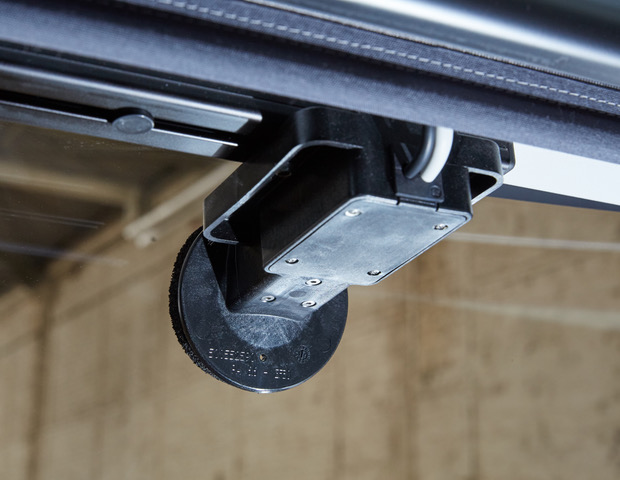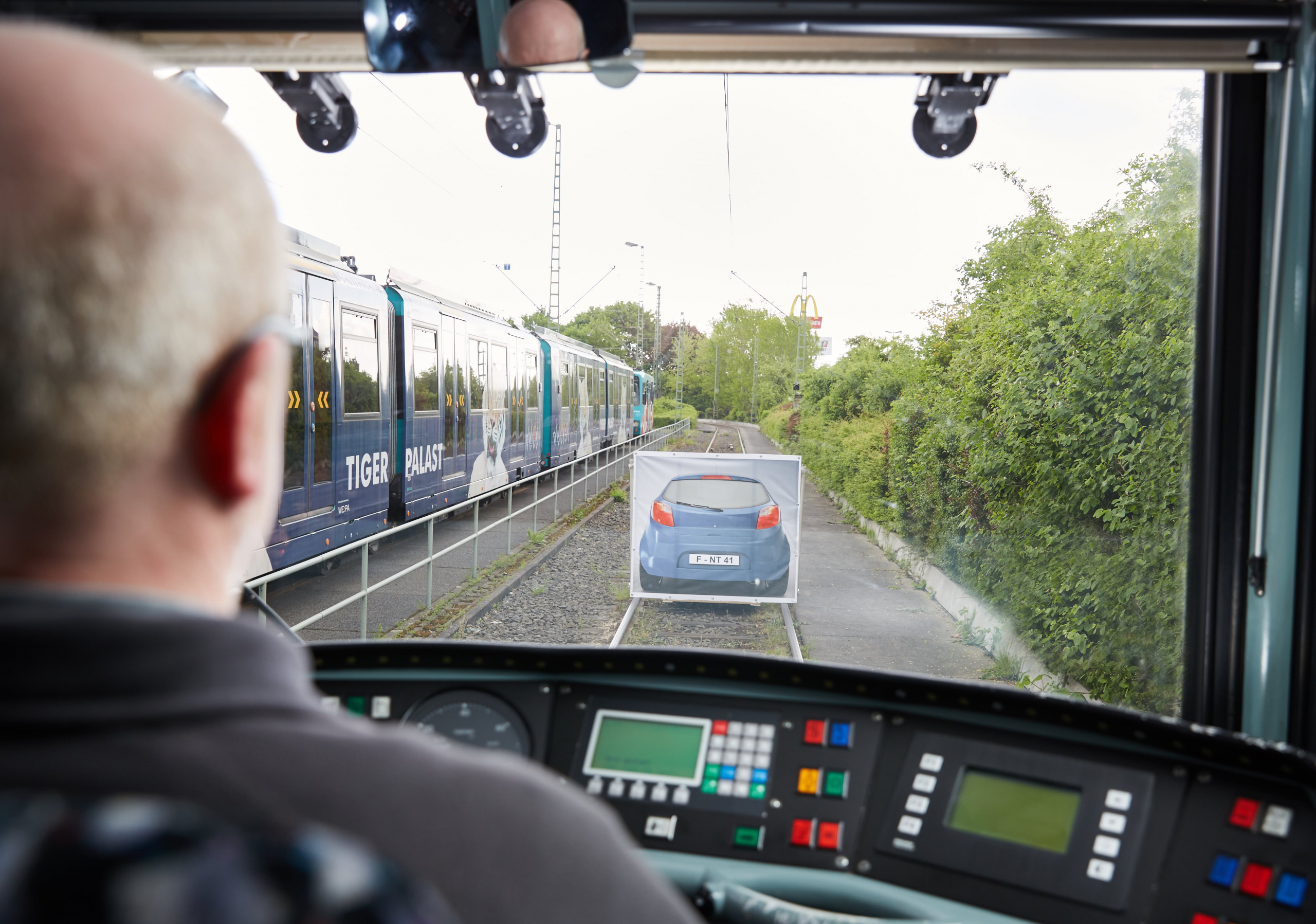FAST
Enhanced safety in tram traffic
The world’s first tram fleet
with a driver assistance system
When buying a new car today, no one gives any real thought to a driver assistance system or a parking assistant. In public transport, however, the introduction of a driver assistance system (FAST) was a revolution when Verkehrsgesellschaft Frankfurt am Main (VGF) became the first company in the world to equip its trams with the new safety technology as standard in 2017.
VGF launched the FAST project because in the past, there had been a disproportionately high number of (minor to severe) accidents involving trams, which led to downtime in workshops and high repair costs.
From the data, the presence of objects can be deduced, whose movement is then tracked with the help of the camera system. If the vehicle and object speeds are known with sufficient accuracy, their relative speed to each other is determined. This can be used to determine whether the tram and object (such as a car, a tram ahead or a person) are approaching each other and whether there is a risk of collision.


If this is the case,
the driver is warned by a signal.
The second system, which is installed in “R” cars of the second series, was developed together with the company Bosch. It is based on a collision warning system with radar and video sensor. While a camera records the flow of the track ahead, the radar unit registers other tracks on the line as well as the position and speed of cars, trucks, buses, bikes, other vehicles and pedestrians in the vicinity.
In addition to moving obstacles, the radar system also detects stationary objects such as buffer stops. High-performance software then interprets the sensor information together with other data, such as the speed of the track. Here, too, the driver is warned by an acoustic signal.
With both systems, he or she has two seconds to acknowledge the warning signal and brake. If he or she fails to do so, the systems initiate emergency braking.
In the meantime, all 74 “S” type railways and twelve older “R” type railways are equipped with FAST. Eight more “R” cars will be retrofitted in the near future.
Social Networks
© Stadtwerke Verkehrsgesellschaft
Frankfurt am Main mbH


